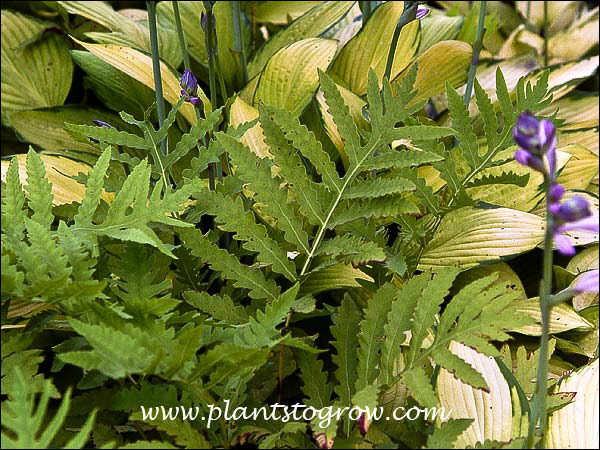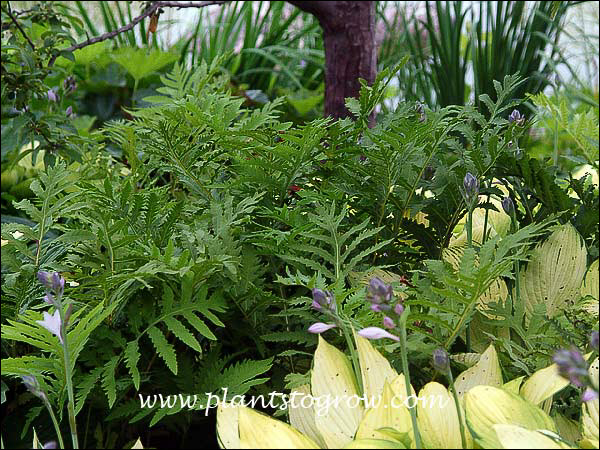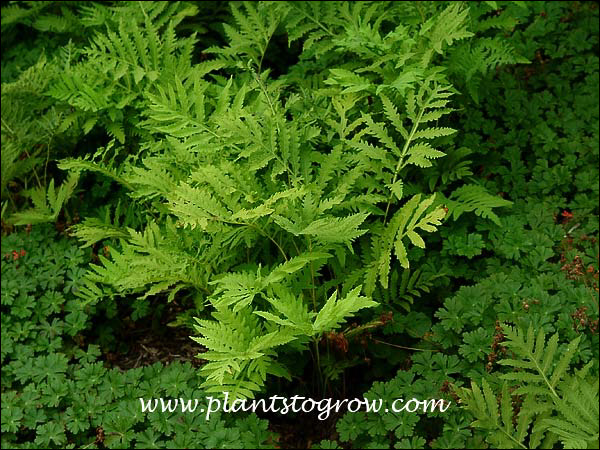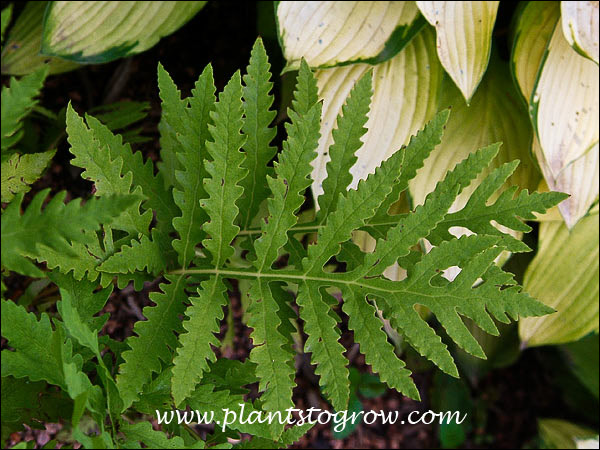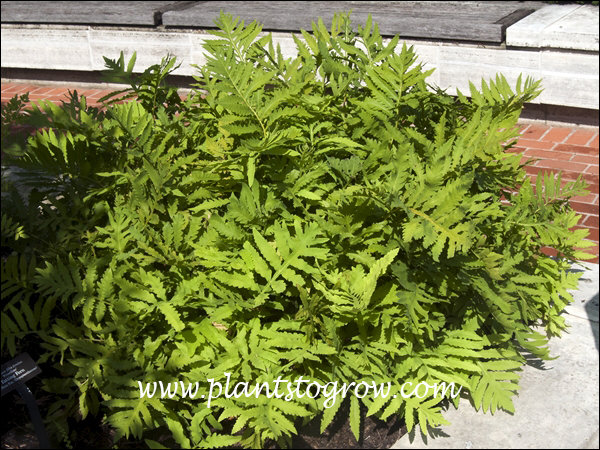| Description | Sensitive fern ( Onoclea sensibilis) gets its name from the tendency of the fronds to wither at the first slight frost and its paired bead-like spore cases—an easy-to-grow native fern. |
|---|---|
| Pronunciation | (dry-OP-ter-iss) |
| Plant Type | Ferns - Hardy |
| Hardiness Zone | 2-10 |
| Sunlight | tolerates sun with adequate moisture |
| Moisture | Prefers moist and tolerates very wet conditions, avoid dry. |
| Soil & Site | Found naturally occurring in marshes, ditches and swamps, wet meadows and stream banks. The soil is usually slightly acidic to neutral. |
| Temperature | The fronds will wither and die at the first frost. |
| Flowers | Ferns are non-flowering plants producing a seed-like structure called a spore. |
| Fruit | The Bead ferns have pairs of bead like spore cases. |
| Leaves | The deciduous fronds are broad, leathery, and nearly triangular in shape. They feature a deeply pinnate to bipinnatifid structure and have a thin texture. Most of the pinnae are almost opposite each other. The rachis is smooth and has a pale tan or yellow color. In the fall, the fronds transition to yellow or russet shades. Fertile fronds, which emerge in late summer, are woody and have bead-like segments that are brown in color, and they persist into winter. These fronds arise from long, creeping, branching rhizomes |
| Stems | long creeping, branching rhizomes |
| Dimensions | Reaches 1-3 feet and can rapidly spread by rhizomes. |
| Propagation | spores or division |
| Misc Facts | This is a monotypic genus. Gleason and Cronquist place this fern in the Onocleaceae family. |
| Notes & Reference | #69-Manual of Vascular Plants of Northeastern United States and Adjacent Canada, North Carolina State University and Connecticut Botanical Society (web sites) |

Cart
